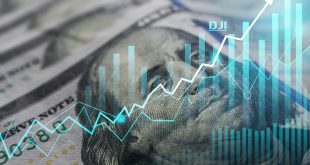Bitcoin’s remarkable rally, which saw it surge to a new all-time high of $124,517 on August 14th, has hit a wall. In the days since, the price has corrected sharply, falling to $116,263 as of late Monday, a 7.6% drop from its peak. This significant price movement underscores a simple truth: even a decentralized asset is fundamentally tied to global macroeconomic factors and investor sentiment.
The initial surge was fueled by optimistic low Consumer Price Index (CPI) data, which boosted hopes for Federal Reserve rate cuts and solidified Bitcoin’s growing reputation as a corporate treasury asset. However, this bullish momentum quickly faded. Investors are now awaiting the upcoming Federal Open Market Committee (FOMC) meeting minutes from July, hoping for clearer signals on future monetary policy. A hawkish stance from the Fed, indicating higher rates for longer, could further depress Bitcoin’s price by reducing market liquidity and investor demand for risk assets. Conversely, a more dovish outlook would likely fuel renewed interest and a potential price rebound.
Institutional Adoption Continues Despite Volatility
Despite the recent price drop, the underlying narrative of institutional adoption remains strong. This is evidenced by a major institutional investor recently purchasing 430 BTC for $51.4 million, bringing their total holdings to a staggering 629,376 BTC. This move, along with the notable transfer of 32,000 dormant BTC worth $3.78 billion, highlights a continued and significant flow of capital into the asset. These actions suggest that large-scale investors are not deterred by short-term price swings. Instead, they view Bitcoin as a strategic, long-term asset, further validating its role beyond pure speculation.
The recent volatility, therefore, is less a sign of Bitcoin’s fundamental weakness and more a reflection of its maturing market. It is now a key player on the global stage, subject to the same forces of monetary policy and large-scale institutional movements that govern traditional financial markets.
 Noor Trends News, Technical Analysis, Educational Tools and Recommendations
Noor Trends News, Technical Analysis, Educational Tools and Recommendations





